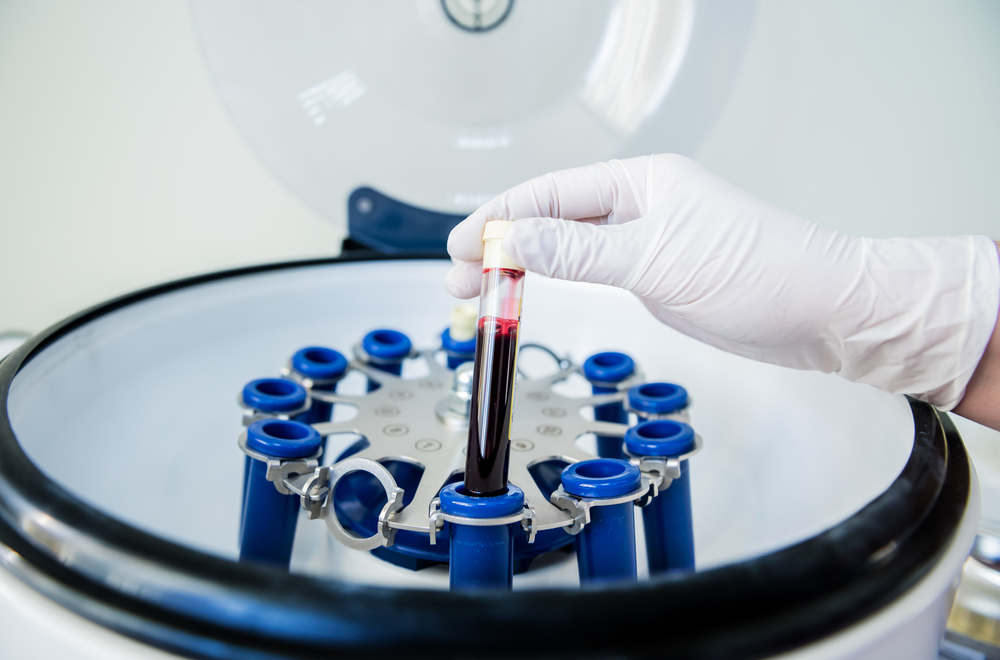1812 E. Broadway St.
Pearland, TX 77581
Please note: We may not offer these treatments at our office. Contact (281) 993-9900 to learn more about our available endodontic services.
At Pearland Dental Group, we believe in combining innovation with compassion to offer our patients the best possible care. Regenerative endodontics is a groundbreaking alternative to traditional root canal therapy, designed to harness your body’s natural healing capabilities to restore vitality to damaged or infected teeth.
Particularly beneficial for younger patients with developing teeth, this biologically driven approach not only removes infection but also encourages the growth of new pulp tissue, supports continued root development, and helps preserve the natural strength of your tooth.
While this advanced treatment may not be offered at our dental office, we invite you to contact our Pearland, TX, dental practice at (281) 993-9900 to find out what options are available and whether regenerative endodontics might be right for you.
At Pearland Dental Group, Dr. Rushi Dave and Dr. Mili Shah remain at the forefront of dental innovation, continuously pursuing advanced training in cutting-edge procedures to offer patients the most progressive treatment options available.
Our commitment to staying current with emerging technologies and research ensures that when new treatments become available, our patients benefit from the latest advances in dental science and regenerative medicine. Beyond our dedication to clinical excellence, we understand that innovative treatments often present unique dental insurance considerations and financial planning challenges.
Our experienced administrative team specializes in navigating coverage for specialized procedures, working closely with insurance providers to explore benefit options while providing transparent cost information upfront.
Located in the vibrant heart of Pearland, our practice serves as your gateway to both advanced dental care and the rich cultural experiences our area offers, from the architectural beauty of Sri Meenakshi Devasthanam to the natural splendor of Houston Botanic Garden, making your journey to optimal oral health part of a broader, enriching life experience.
Pulpal necrosis occurs when the dental pulp—the soft, living tissue inside your tooth—dies as a result of infection, trauma, or other damaging factors. When this happens, the root canal system becomes necrotic, often leading to pain, swelling, and the risk of further complications if left untreated.
When young teeth have pulpal necrosis, it is a serious issue. This condition stops the tooth from developing its root further. As a result, the tooth ends up with thin walls and an open tip, or apex, making it more likely to break or get infected.
Regenerative endodontic procedures are designed to address pulpal necrosis by encouraging the growth of new, healthy tissue within the root canal. By harnessing the body’s own healing potential, these advanced therapies offer hope for saving teeth that might otherwise be lost due to pulpal necrosis.
Regenerative endodontics (RET) is a clinical regenerative endodontic procedure that removes damaged or infected pulp tissue and places bioactive material into the root canal. This approach uses techniques that focus on the body’s ability to heal itself, especially for teeth that are not fully developed.
The special materials contain growth factors and stem cells that help in the repair and regeneration of dental pulp tissue. These components promote the growth of new pulp and dentin, which are essential parts of the tooth. Over time, this new tissue can restore the tooth’s natural function and structure through pulp tissue regeneration.
Regenerative therapy and regenerative endodontic therapy are based on tissue engineering concepts and aim for pulp tissue regeneration, root maturation, and restoration of pulp functions. The main goal of RET is to help the tooth’s roots mature and close at the tip, so it can keep developing normally.
This treatment approach is particularly beneficial for young patients, especially in cases involving immature permanent teeth, immature teeth, young permanent teeth, and teeth with incomplete root formation or incomplete root development.
Stem cells are at the heart of regenerative endodontic procedures, offering the unique ability to transform into various specialized cells needed for dental tissue repair. In regenerative endodontics, several types of stem cells play a crucial role, including mesenchymal stem cells, dental pulp stem cells, and periodontal ligament stem cells.
These cells can be sourced from the patient’s own tissues or, in some cases, from donor material and are essential for initiating the regeneration of dental pulp, dentin, and supporting structures.
When introduced into the root canal system of immature teeth, these stem cells can differentiate into dental pulp cells and other cell types necessary for tissue regeneration. This process not only supports root development and pulp regeneration but also helps restore the tooth’s natural function and vitality.
The use of stem cells in regenerative endodontic treatment has shown promising results, particularly in young patients, by enabling the formation of new, healthy tissue where it was previously lost.
Regenerative endodontics offers several benefits over traditional endodontic treatments, including:
Unfortunately, not all patients are candidates for regenerative endodontic procedures. The following factors are considered when determining if a patient is a good candidate for regenerative endodontics:
A dental professional will begin by performing a comprehensive dental exam of the affected tooth, which may include digital X-rays, thermal or electric pulp testing, and other diagnostic tools to assess the vitality of the tooth and the extent of the infection or damage.
Radiographic assessment also includes evaluation for apical periodontitis and root resorption, as these conditions can impact the prognosis and success of regenerative endodontic treatment. This step is critical for determining whether regenerative endodontic treatment (RET) is a viable alternative to traditional root canal therapy, especially in younger patients with immature roots.
Once RET is deemed appropriate, your Pearland dentist will administer local anesthesia and create a small access opening in the crown of the tooth to reach the pulp chamber and root canal system. They’ll carefully remove all necrotic (dead) or infected tissue while preserving as much of the natural tooth structure as possible.
Disinfecting necrotic root canal systems presents unique challenges, as thorough cleaning and effective management of the entirety of all root canal systems are crucial for promoting healing and regeneration. Specialized irrigation solutions and medications will be used to disinfect the canals while minimizing disruption to any remaining viable stem cells in the area.
A critical step in regenerative endodontic procedures is the thorough chemical disinfection of the root canal system. This process is essential for eliminating harmful bacteria and creating a sterile environment that supports stem cell survival and tissue regeneration. Commonly used disinfectants include triple antibiotic paste and calcium hydroxide, both of which are effective at reducing microbial load within the root canal.
However, these chemical agents must be used carefully, as overly aggressive disinfection can damage the very stem cells needed for regeneration. The goal is to strike a balance, removing infection while preserving the viability of stem cells and the surrounding tissues. By carefully managing chemical disinfection, dental professionals can optimize the conditions for successful regenerative endodontic treatment.
Blood clot formation is a foundational step in regenerative endodontic procedures, serving as a natural scaffold within the root canal space. After the root canal has been disinfected, the dentist will intentionally induce bleeding from the periapical tissues into the canal. This process releases stem cells and growth factors into the root canal, where the resulting blood clot provides a matrix for new tissue to develop.
The blood clot not only supports the attachment and proliferation of stem cells but also delivers essential growth factors that signal the body to begin tissue regeneration. This environment encourages the formation of new dentin, pulp, and periodontal ligament, helping to restore the tooth’s structure and function. Blood clot formation is especially important in immature teeth, as it lays the groundwork for continued root development and long-term tooth vitality.
After thoroughly cleaning and shaping the canal system, your dentist will place a regenerative scaffold into the canal. This scaffold often includes platelet-rich plasma (PRP), blood clot induction, or biocompatible materials containing stem cells or growth factors designed to stimulate regeneration of pulp-like tissue.
The scaffold supports growth factor release and the formation of organized vital pulp tissue, which are essential for successful pulp tissue regeneration. This biological material encourages the body to naturally form new tissue and blood vessels within the canal, supporting continued root development and healing.
A temporary dental filling or seal is then placed over the access opening to protect the tooth from contamination while the regenerative process begins. This temporary material helps maintain a sterile environment and keeps the regenerative material stable during the early stages of healing.
You’ll return for a series of follow-up visits over several months. During these appointments, your dentist will assess healing through clinical exams and imaging, looking for signs such as continued root development, thickening of the canal walls, and resolution of any periapical infection.
Evaluation of radiographic and survival outcomes in treated teeth is essential to determine the long-term effectiveness of the procedure, and clinical studies often report on the number of teeth treated and their response to regenerative endodontic therapy. If the tooth responds well, a permanent restoration—such as a dental crown or composite filling—may be placed to ensure long-term function and durability.
Following regenerative endodontic treatment, patients can look forward to several positive outcomes, including relief from symptoms, periapical healing, and, in many cases, continued root development.
The success of the procedure is evaluated through a combination of clinical assessments and radiographic imaging. Dentists will monitor for signs of newly formed tissue, such as thickening of the root canal walls, closure of the apex, and the return of pulp sensibility.
Pulp sensibility testing and radiographic exams are key tools in determining whether tissue regeneration and pulp regeneration have occurred. The formation of new dentin, pulp, and periodontal ligament within the root canal is a strong indicator of successful treatment.
However, outcomes can vary based on factors like the initial severity of infection, the quality and quantity of stem cells present, and the effectiveness of chemical disinfection.
Overall, regenerative endodontic treatment offers a promising alternative to traditional root canal treatment, especially for immature teeth. By promoting tissue regeneration and continued root development, this innovative approach can help preserve natural teeth and restore their function for years to come.
While regenerative endodontics shows promise for treating immature permanent teeth with infected pulp, there are several limitations associated with this approach. Here are some common limitations:
Regenerative endodontic treatment typically requires multiple appointments over several months to complete. The exact length of treatment will depend on factors such as the severity of the damage, the patient’s age, and the healing rate of the tooth.
Insurance coverage for regenerative endodontic treatment can vary depending on the patient’s policy and the treatment performed. Patients should check with their insurance provider to determine whether regenerative endodontic treatment is covered and to what extent. In some cases, insurance may only cover the cost of traditional root canal therapy, not regenerative endodontics.
Regenerative endodontics is a promising new approach to treating damaged or infected teeth. By using the body’s natural healing mechanisms, regenerative endodontics can promote the growth of new tissue and restore the function of the affected tooth. As research continues, regenerative endodontics will likely become an increasingly popular option for dental patients seeking to preserve their natural teeth.
Call our Pearland, TX, dental practice at (281) 993-9900 today to schedule an appointment and learn more about advanced endodontic services. We also serve the surrounding areas such as Webster, Fresno, & Pasadena, TX.






Our clinic offers all kinds of services and constantly study new
technology to add new custom services to the list
Phone: (281)993-9900
Address: 1812 E. Broadway St. Pearland, TX 77581
Copyright © 2021 Pearland Dental Group | Managed by Now Media Group